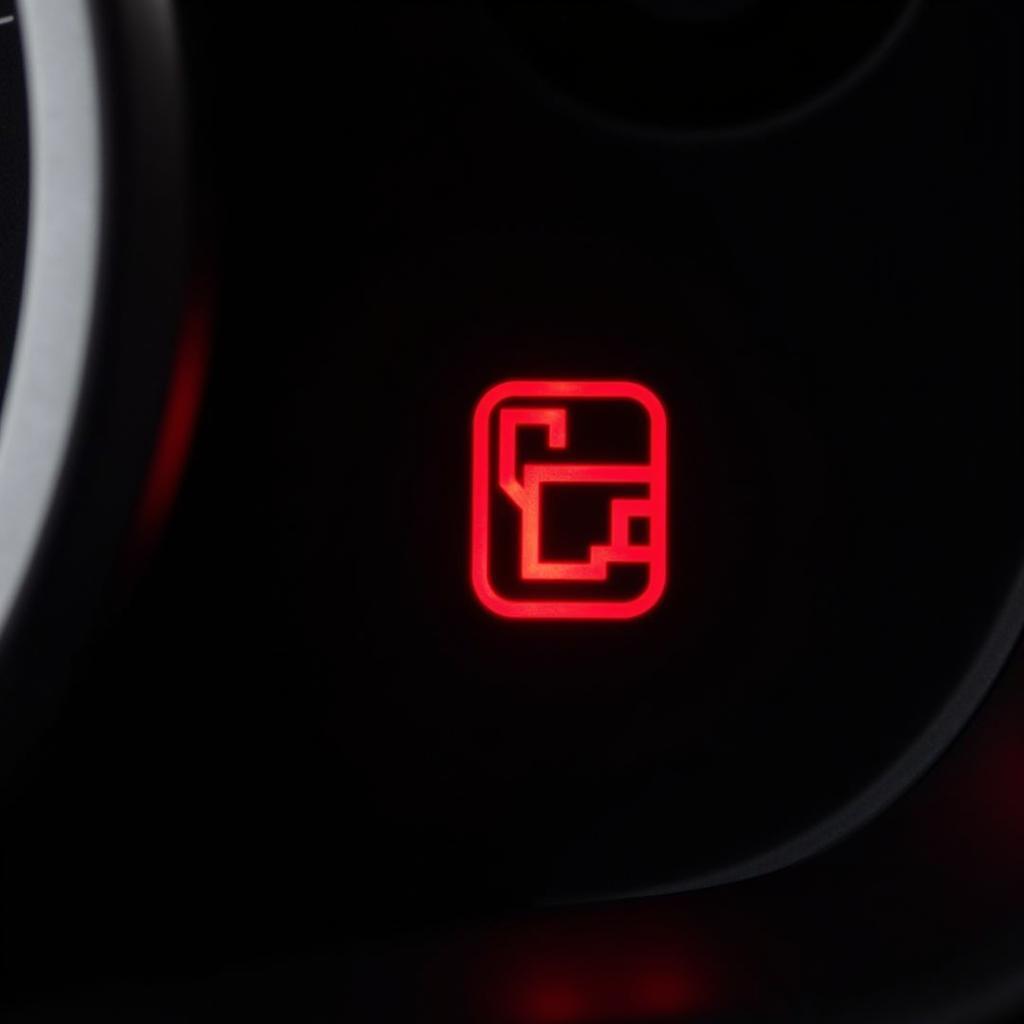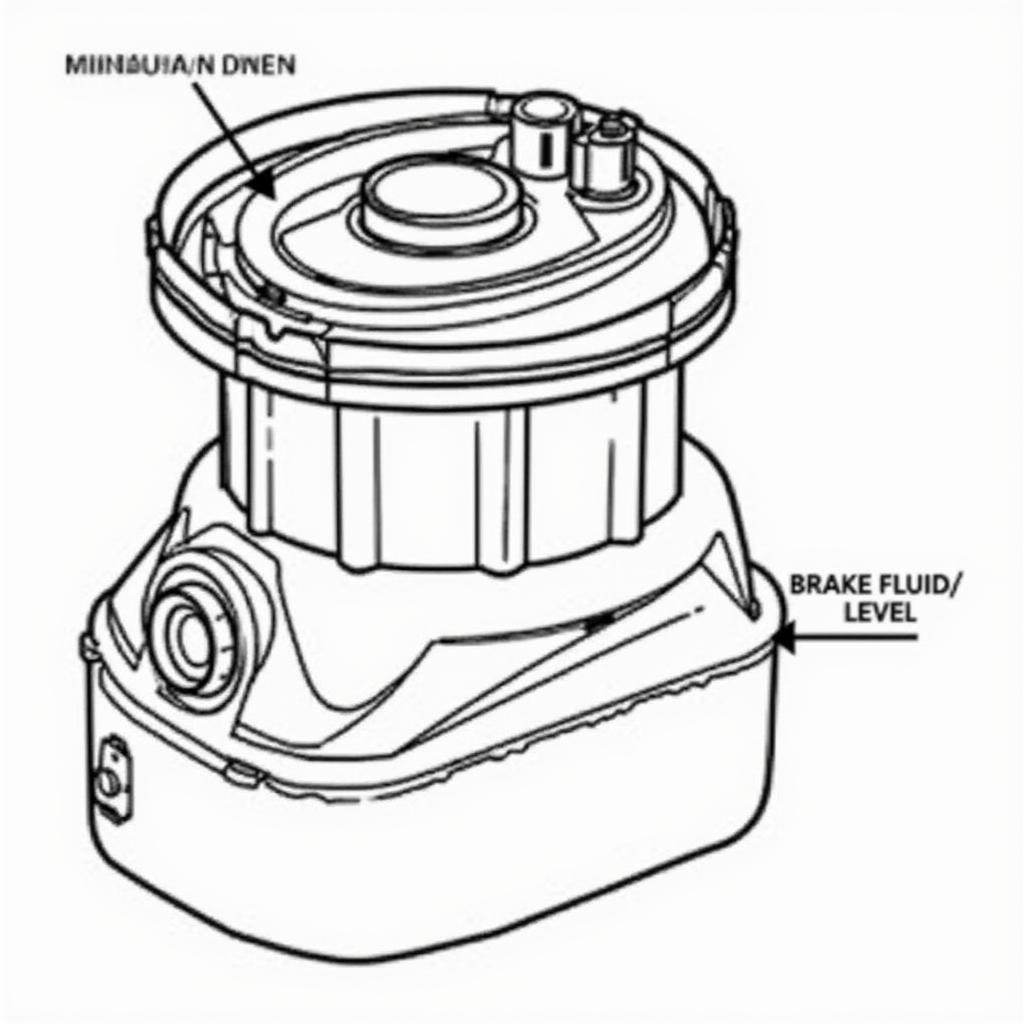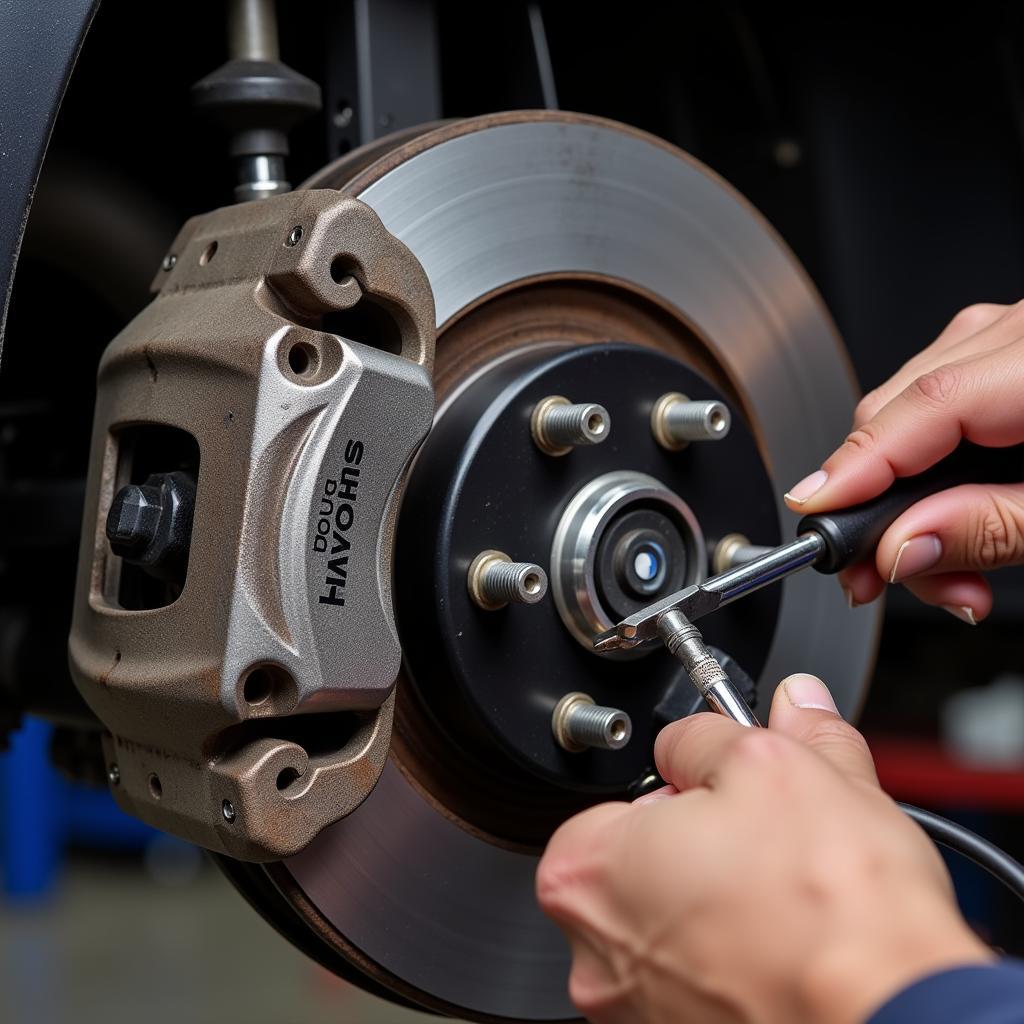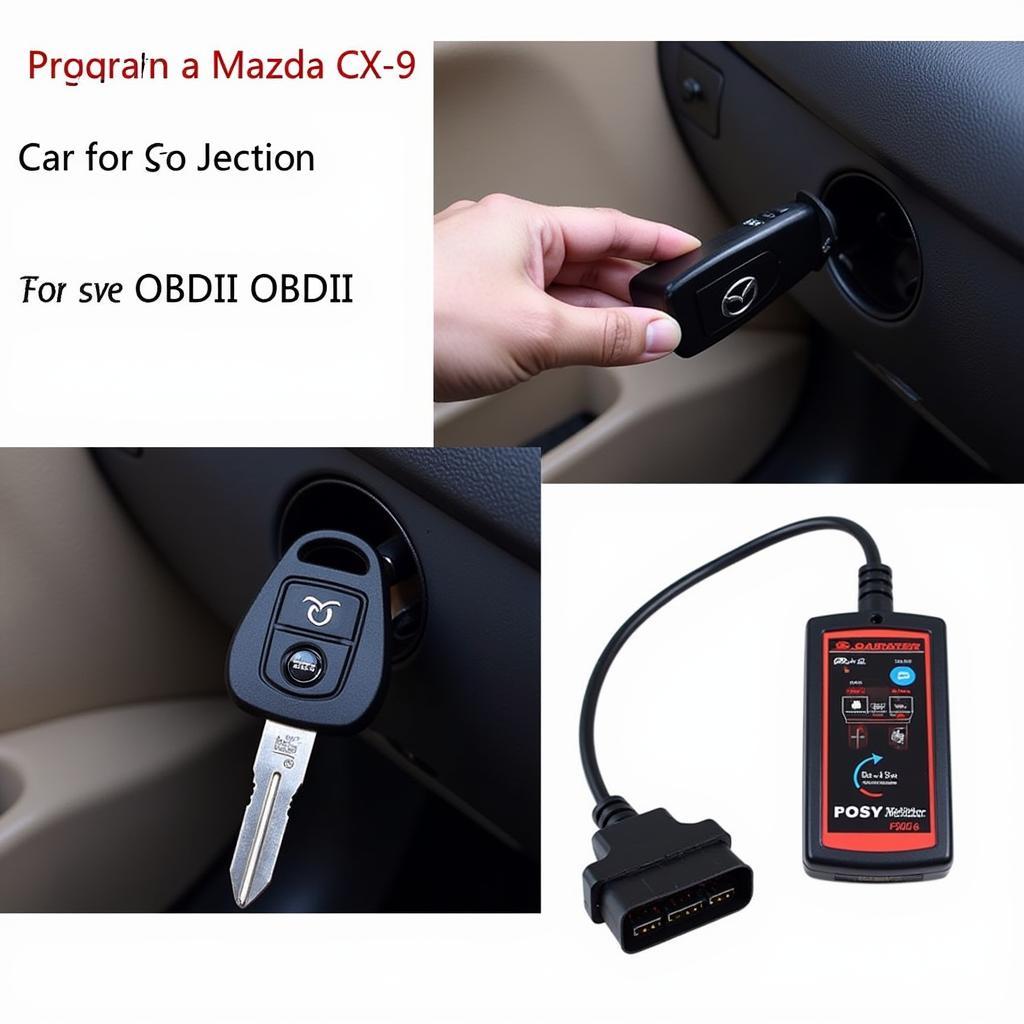Seeing a brake warning light illuminated on your BMW X3’s dashboard can be unsettling. While it’s crucial to never ignore this warning, it’s helpful to understand the potential causes and how to potentially reset the light yourself.
 BMW X3 Dashboard with Illuminated Brake Warning Light
BMW X3 Dashboard with Illuminated Brake Warning Light
Common Reasons Your BMW X3 Brake Warning Light is On
There are several reasons why your brake warning light might be on. Some are simple fixes, while others require the attention of a qualified mechanic:
- Worn Brake Pads: This is the most common reason. BMW X3s are equipped with sensors that trigger the warning light when the pads wear down to a certain level.
- Low Brake Fluid: Brake fluid is essential for your X3’s braking system to function properly. A leak or low fluid level can trigger the warning light.
- Faulty Brake Light Switch: This switch is responsible for turning on your brake lights when you press the pedal. If faulty, it can also illuminate the brake warning light.
- ABS Issue: A problem with your X3’s Anti-lock Braking System (ABS) can trigger the warning light. This usually requires a professional diagnosis.
- Electronic Parking Brake Fault: If your X3 is equipped with an electronic parking brake and there’s a malfunction, it can trigger the warning light.
Resetting the Brake Warning Light on Your BMW X3: A Step-by-Step Guide
Important: Before attempting any reset, ensure you’ve addressed the underlying issue that caused the brake warning light to come on. If you’re unsure, it’s always best to consult with a qualified mechanic.
If the light is on due to worn brake pads or low brake fluid, you might be able to reset it yourself after addressing the problem:
-
Address the Root Cause: Replace worn brake pads or top off low brake fluid, ensuring you use the correct fluid type specified in your X3’s owner’s manual.
-
Turn on the Ignition: Turn your X3’s ignition to the “on” position but don’t start the engine.
-
Press and Hold the Brake Pedal: Firmly press and hold the brake pedal down for about 30 seconds.
-
Turn Off the Ignition: Release the brake pedal and turn off the ignition.
-
Check the Warning Light: Turn the ignition back to the “on” position and check if the brake warning light has gone off. If it remains illuminated, the issue may be more complex, and you should consult a mechanic.
 Checking the Brake Fluid Level in a BMW X3
Checking the Brake Fluid Level in a BMW X3
When to Seek Professional Help
While some brake warning light issues can be resolved with a simple reset, others require professional attention. Here’s when you should consult a qualified mechanic:
- The light remains on after attempting a reset.
- You’re experiencing braking problems, such as a soft or spongy brake pedal, unusual noises while braking, or pulling to one side.
- You suspect an issue with your ABS or electronic parking brake.
“Ignoring a brake warning light can be extremely dangerous,” warns master BMW technician, Mark Johnson. “Even if the light goes off after a reset, it’s always wise to have your brakes checked by a professional if you suspect any underlying problems.”
FAQs About Resetting Your BMW X3 Brake Warning Light
Can I drive my BMW X3 with the brake warning light on?
It’s strongly advised against driving with the brake warning light illuminated. This light indicates a potential problem with your braking system, which could lead to reduced braking performance or even brake failure.
Will disconnecting the battery reset the brake warning light?
Disconnecting the battery might temporarily reset the warning light, but it won’t address the underlying issue. This method is not recommended as it can lead to other electrical problems in your X3.
How often should I get my BMW X3’s brakes checked?
It’s generally recommended to have your BMW X3’s brakes inspected at least once a year or every 10,000-12,000 miles, even if you haven’t noticed any issues.
 Inspecting Brake Pads on a BMW X3
Inspecting Brake Pads on a BMW X3
Ensuring Your BMW X3’s Brakes are in Top Condition
Remember, your BMW X3’s brakes are a critical safety system. Addressing warning lights promptly and adhering to a regular maintenance schedule are the best ways to ensure your vehicle stops safely and reliably when you need it most.

